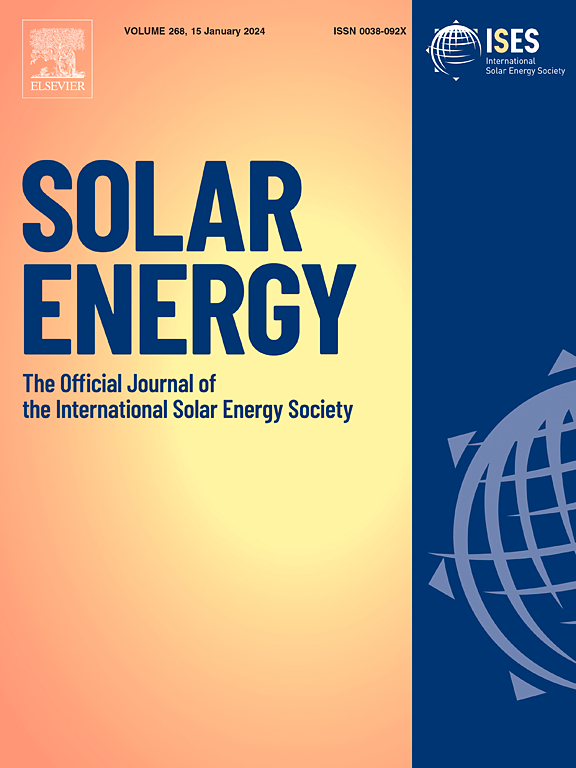光伏太阳能电池用高效卤化物钙钛矿Rb2NaTlBr6的理论研究
IF 6
2区 工程技术
Q2 ENERGY & FUELS
引用次数: 0
摘要
开发稳定、无毒、高效的钙钛矿材料对于推进下一代光伏技术至关重要。虽然已经探索了许多卤化物双钙钛矿,但许多卤化物双钙钛矿存在间接带隙或有限的光电可调性。在这项工作中,我们采用第一性原理计算来研究铷基双钙钛矿Rb2NaTlBr6的结构、电子和光学特性。结果表明,该化合物具有1.869 eV的直接带隙,具有较强的动力学和热力学稳定性。值得注意的是,拉伸应变工程的应用系统地将带隙减小到1.374 eV,使其处于太阳能吸收的最佳范围内,并显着提高了其光电响应。该材料还具有较高的吸收系数和良好的载流子有效质量。重要的是,在5%的拉伸应变下,光谱限制最大效率(SLME)达到33%,强调了其光伏潜力。研究结果表明,菌株工程的Rb2NaTlBr6是高效太阳能应用的有前途的无铅候选材料。本文章由计算机程序翻译,如有差异,请以英文原文为准。
Theoretical investigation of high-efficiency halide perovskite Rb2NaTlBr6 for photovoltaic solar cells
The development of stable, non-toxic, and high-efficiency perovskite materials is critical for advancing next-generation photovoltaic technologies. While numerous halide double perovskites have been explored, many suffer from indirect band gaps or limited optoelectronic tunability. In this work, we employ first principles calculations to investigate the structural, electronic, and optical characteristics of the rubidium-based double perovskite . Our results reveal that the compound exhibits a direct band gap of 1.869 eV, along with strong, dynamic and thermodynamic stability. Notably, the application of tensile strain engineering systematically reduces the band gap to 1.374 eV, placing it within the optimal range for solar absorption and significantly enhancing its optoelectronic response. The material also demonstrates high absorption coefficients and favorable carrier effective masses. Importantly, the spectroscopic limited maximum efficiency (SLME) reaches 33% under 5% tensile strain, underscoring its photovoltaic potential. The findings suggest that strain engineered is promising, lead-free candidate for high-efficiency solar energy applications.
求助全文
通过发布文献求助,成功后即可免费获取论文全文。
去求助
来源期刊

Solar Energy
工程技术-能源与燃料
CiteScore
13.90
自引率
9.00%
发文量
0
审稿时长
47 days
期刊介绍:
Solar Energy welcomes manuscripts presenting information not previously published in journals on any aspect of solar energy research, development, application, measurement or policy. The term "solar energy" in this context includes the indirect uses such as wind energy and biomass
 求助内容:
求助内容: 应助结果提醒方式:
应助结果提醒方式:


